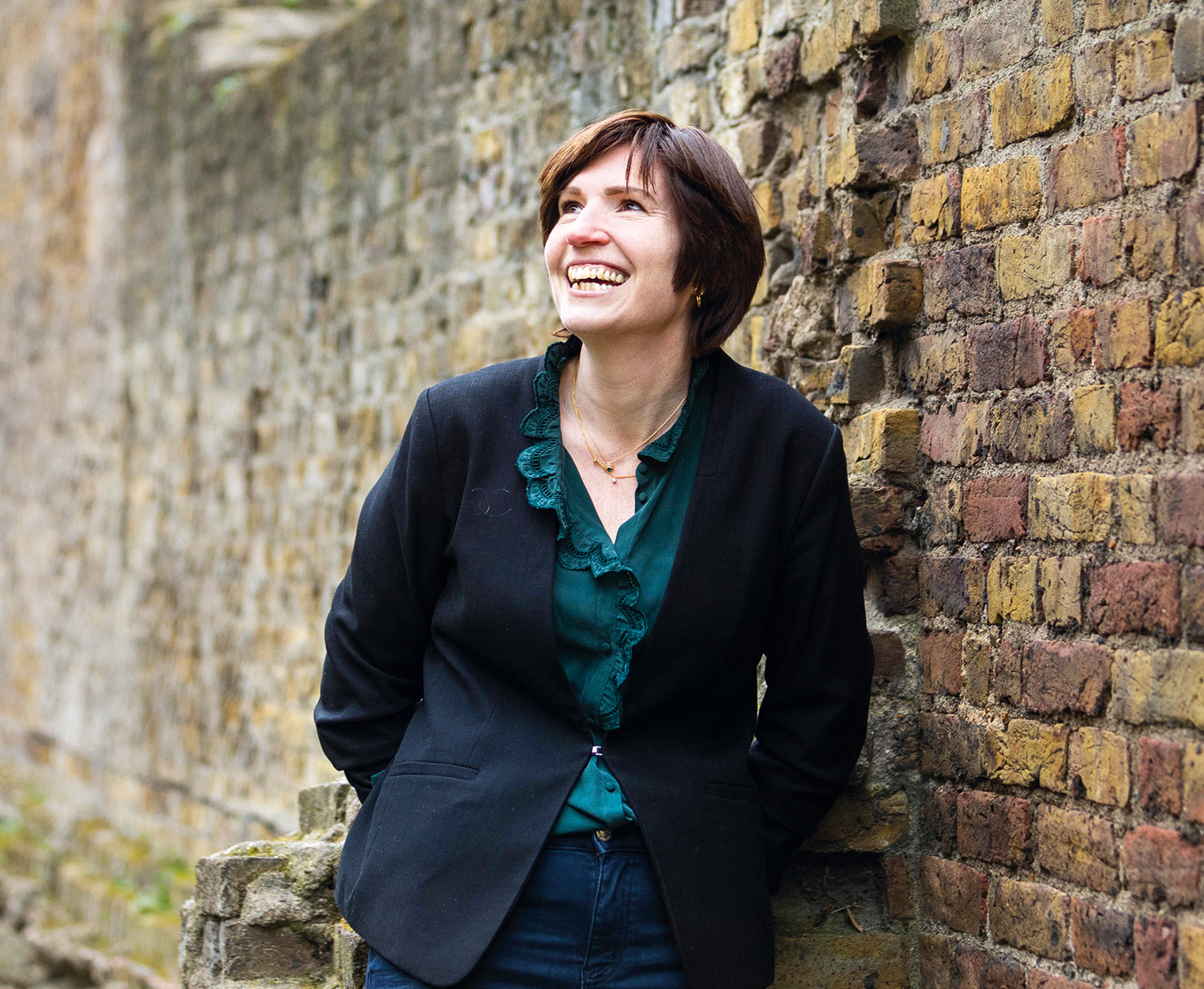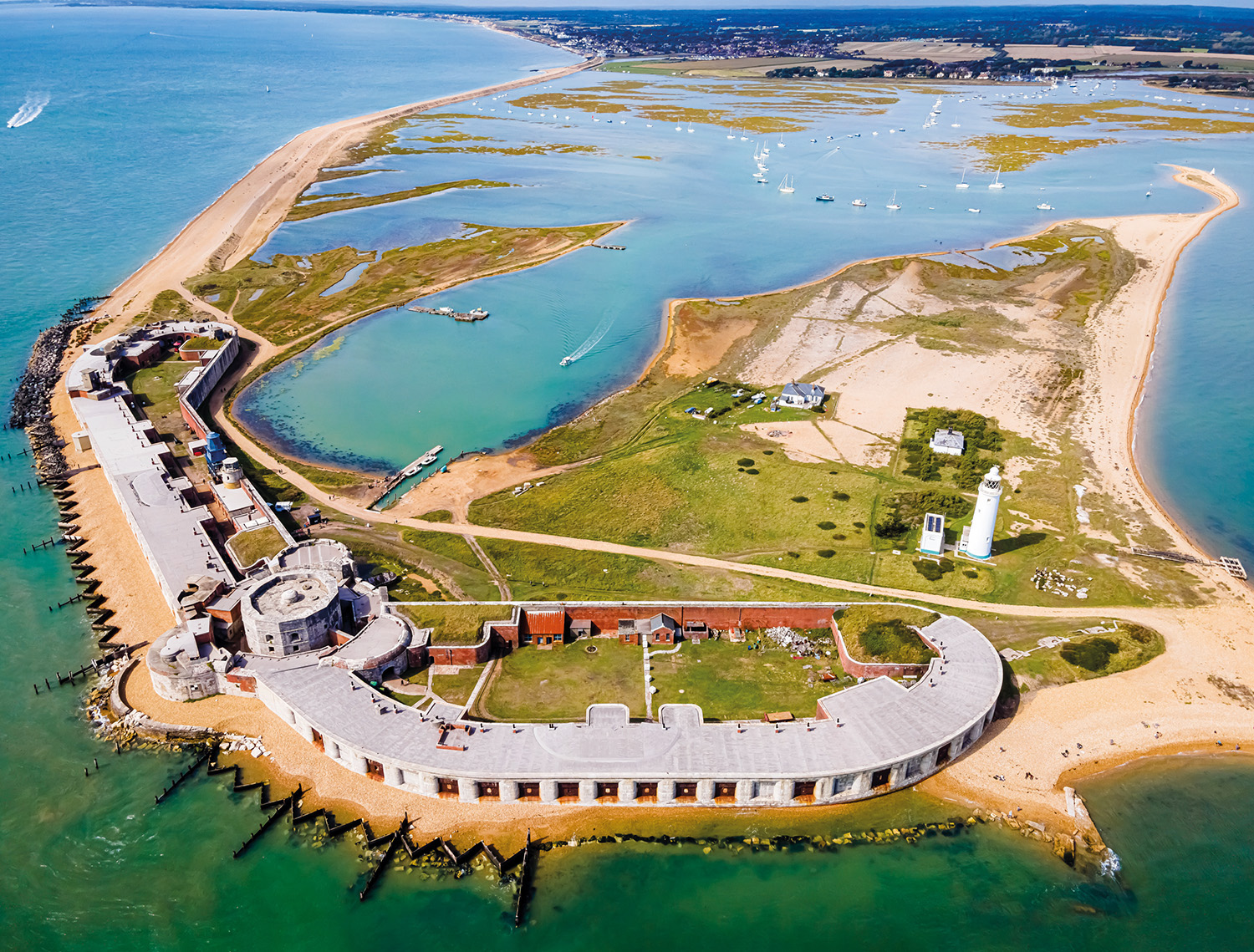
How do you decarbonise historic buildings? Will Mann meets English Heritage head of climate and sustainability Ruth Knight to hear about its climate action plan.
From prehistory to the Cold War, English Heritage cares for over 400 buildings and monuments. These range from the recently acquired Thornborough Henges in Ripon – the ‘Stonehenge of the North’ – to York’s nuclear bunker, which was in use as recently as 1991.
The direct carbon footprint of English Heritage’s estate is a sizeable 4,400 tonnes of CO2 a year (scope 1 and 2 emissions) – and it has set a tough target of a 20% reduction by 2025. The organisation aims to reach net zero by 2040.
“Our carbon reduction programme is ambitious,” says head of climate and sustainability Ruth Knight, who will be speaking at CIOB’s annual conservation conference on 25 April.
And this isn’t just about specialist heritage skills, she adds. “To achieve our goals, we will be tapping into the wider expertise of the construction industry – modular building, digital innovation, renewable energy installations.”
Knight joined English Heritage in July 2021 and her first task was to compile its climate action plan for 2022-25. This meant crunching the data about its carbon footprint.
In numbers: English Heritage Climate Action Plan 2022-25
400+
Number of buildings and monuments
4,400
Tonnes of CO2 produced a year (scope 1 and 2), direct carbon footprint (2019-20 baseline)
66,200
Tonnes of CO2 produced a year (scope 1, 2 and 3), indirect carbon footprint including visitor travel
20
Percentage reduction target in scope 1 and 2 building carbon emissions by 2025
2040
Net zero target
“We found that 10 sites accounted for 52% of all our carbon emissions, among them Dover Castle and Osborne House on the Isle of Wight,” she says.
Half its direct emissions come from electricity and another 26% from gas so energy efficiency is a priority over the next two years. “Be lean, be mean, be green – that’s the mantra,” Knight says.
She acknowledges there is a ‘transition risk’ to be navigated: “We have to walk a fine line – reducing carbon emissions and complying with the legislation, while conserving our historic places and maintaining our reputation as a responsible charity.”
Carbon reduction
The carbon reduction programme is now well underway. Electrical upgrades, window repair and insulation, plus more onsite generation of green energy are all in the plan to reach the 2025 target.
The Victorian-era Gardeners House at Audley End is currently being renovated with an air source heat pump and EV charger fitted. Airbnb has supported the restoration and refurbishment of the property and English Heritage will let it out as one of the charity’s holiday cottages.
Larger sites such as Kenilworth Castle and the Audley End country house in Essex will have their own masterplans with climate action woven in. At Clifford’s Tower in York, which reopened last year after renovations, consultant Ramboll carried out a life cycle assessment to help inform future project approaches.
Strange as it may seem for a heritage body, there will be some new build. “We have visitor centres on our sites which are quite basic and need replacing,” Knight explains.
“These could be modular or buildings that are easily reusable. We’ve been looking at Landsec’s ‘kit of parts’ approach [used on The Forge development in Southwark] for ideas.
“We recently completed a new visitor building at Old Wardour Castle in Wiltshire. It’s only a small building, but we’ve minimised embodied carbon in the materials, and fitted a heat pump, electrical heating and a green roof.”

The difficulty with some new technologies is making them work in historic buildings, Knight acknowledges.
“For example, heat pumps have to be able to work with historic radiators,” she says.
Skilled contractors
“Fitting insulation is more invasive, so you need skilled contractors who will understand the sensitivity of the building fabric. Also, we usually only install small sections of targeted insulation, rather than a complete envelope, because otherwise problems like mould growth can occur because the building can’t breathe.”
Traditional skills can also be in short supply. “The number of people who can do flint knapping, for example, is very limited, but we have a lot of ruins in East Anglia which need these specialist conservation skills,” Knight says.
“And on a general point, our sustainability strategy will be about trying to use local materials, local crafts, local skills wherever we can.”

“We’ve started modelling climate risk across all our sites, which allows us to identify the sites which are the most vulnerable and exposed to climate hazards like extreme rainfall.”
English Heritage will expect 80% of its large suppliers to have their own public net zero commitments and action plans.
Climate resilience
A broader challenge is climate resilience work, where English Heritage will be working with other stakeholders.
Hurst Castle sits on a narrow spit of land in Hampshire and in February 2021 a section of wall collapsed after the sea exposed and undercut its foundations.
“It is an example of how our coastline sites are struggling with sea level rise and extreme weather,” Knight explains. “We have put in rock armour at Hurst but we need to make a decision with Historic England about what we do next and this involves a wider discussion with the community and other bodies including the Environment Agency.
“We’ve started modelling climate risk across all our sites, which allows us to identify the sites which are the most vulnerable and exposed to climate hazards like extreme rainfall.”
Next, Knight wants to create digital twins to model different climate change scenarios. “If we created a digital twin of one of our mansion houses, we could then see, for example, the impact of extreme rainfall on drainage, and assess whether we need to change the maintenance regime,” she explains.
Some unused historic building features may help with the carbon reduction strategy, Knight adds.
“Where window shutters have been taken off buildings, could they be restored to provide solar shading? Could we reopen up chimneys to allow natural ventilation?” she says.
“Our climate action plan is about taking a holistic view of every building and identifying opportunities – this is where reaching out to see what we can learn from the wider construction industry is so important.”
The CIOB Conservation Conference, New Ideas for Tough Times, takes place on 25 April at One Moorgate Place, London EC2R 6EA. Further information at: www.ciob.org/events.











